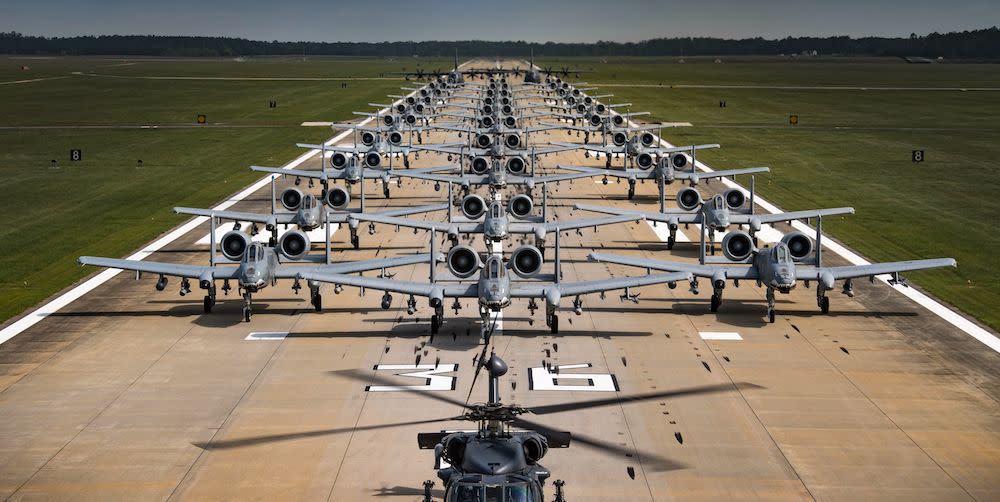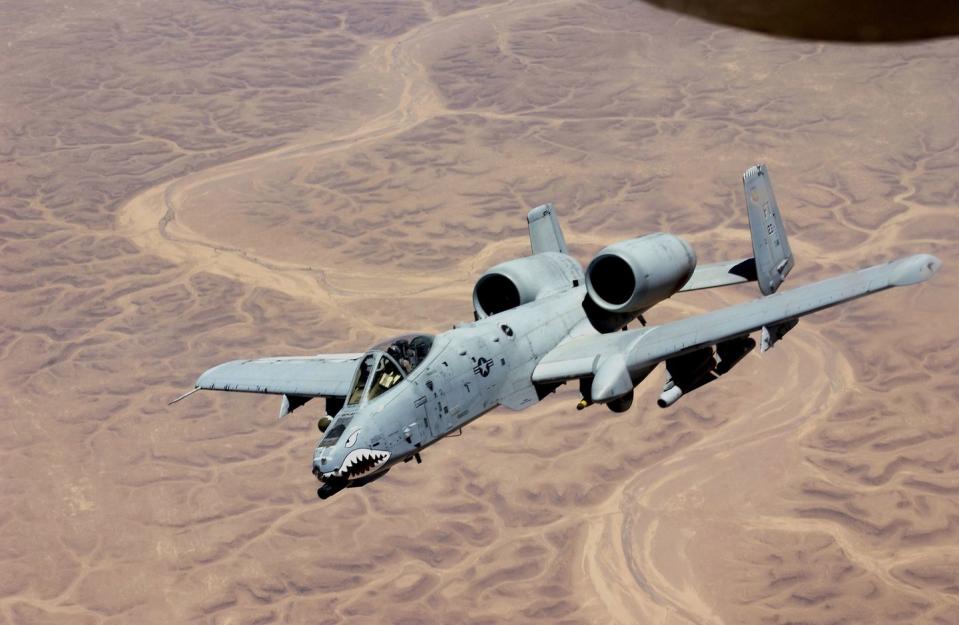By 2027, the U.S. Air Force Could Shrink by More Than 1,000 Planes

A member of Congress has charged that the Air Force wants to retire more than 1,000 planes over the next five years.
While the Air Force declined to comment on the charge, the number is consistent with past attempts from the service to shrink the aircraft fleet.
The Air Force wants to rid itself of older aircraft to spend more money on new planes.
A U.S. Senator claimed last week that the Air Force wants to shrink the service’s fleet of aircraft by more than 1,000 planes over the next five years. If true, the cuts would shrink the service’s total fleet by about 15 percent. The Pentagon says it needs to retire planes that are “not survivable” in future fights, while shifting the funds used to maintain them to planes that can be “decisive” in the future.
During a Senate Armed Services Committee budget hearing on April 7, Sen. Deb Fischer, a Republican from Nebraska, stated that the Air Force wanted to retire 1,468 planes over the next five years while buying just 467 planes—a net reduction of 1,001 aircraft. The current U.S. Air Force, Air Force Reserve, and National Guard air fleet currently stands at 5,501 aircraft, including everything from F-22 Raptors to unpowered gliders.
✈ Don’t miss any of our best-in-class military and defense coverage. Join our squadron.
Fischer, according to Air Force Magazine, claims the Air Force wants to retire 369 aircraft this year alone, a charge the Air Force has declined to comment on. The service has requested to retire 150 aircraft this year, and also would like to transfer 100 MQ-9 Reaper armed drones to another government agency, for a total loss of 250 aircraft. The 119-aircraft discrepancy is unexplained. However, as Air Force Magazine notes, Fischer’s alleged loss of 1,001 aircraft (or about 200 per year for five years) is in line with previous service attempts to reduce its aircraft numbers.
In 2023, the Air Force wants to retire 21 A-10 Thunderbolts, replacing them with an equal number of F-16s. The service also wants to retire 33 of the 36 F-22 Raptors that are incapable of combat, leaving 123 combat-capable F-22s and 31 training-only F-22s in service. The rest of the cuts consist of combat-support aircraft, including cargo planes, tankers, and battlefield and command-and-control aircraft—plus the 100 MQ-9 Reapers.
It’s not clear which kinds, or how many, aircraft the Air Force wants to retire over the next five years. But one obvious plane on the chopping block is the A-10 Thunderbolt, which the Air Force considers obsolete for close-air support over modern battlefields. The Air Force would prefer that the F-35 take over close-air support, reasoning that its stealth and electronic warfare capabilities would better protect it from enemy battlefield air defenses. Public enthusiasm and congressional support for the A-10 has prevented the service from disposing of the remaining 281 aircraft.
Other planes likely to be divested are older versions of the F-16 Fighting Falcon (replaced by the F-35); E-3 Sentry AWACS early warning and control planes; B-1B and B-2 bombers (replaced by the B-21 Raider); F-15C Eagles and F-22A Raptors (replaced by the new Next-Generation Air Dominance fighter); additional MQ-9A Reaper drones, and other support aircraft. Many of these aging platforms are growing more difficult and expensive to maintain in their in advanced years, and the Air Force would rather just get rid of them and free up money to buy new jets.

Yet the Air Force is struggling to modernize its aircraft fleet. The average aircraft is 29.1 years old. Some planes, like the B-1B Lancer bomber, are 34.1 years old on average, while the F-15C is 37.69 years old on average. Newer aircraft include the KC-46 Pegasus tanker at 1.48 years old, and the MQ-9 Reaper with an average age of just six years (though it has become less useful as the services reconfigure away from counterinsurgency toward big-power warfare). The KC-135 Stratotanker, based on the Boeing 707 jetliner, is 60.35 years old. The age issues are partially due to a holiday on aircraft purchases at the end of the Cold War, an emphasis on land wars in the post-9/11 era, budgetary pressure, and the lateness of some aircraft entering service, particularly the F-35.
The cuts, if genuine, would reduce the Air Force from 5,501 aircraft of all types to 4,500 planes. Ideally, the cuts would be erased in future years as aircraft like the Next-Generation Air Dominance fighter, B-21 Raider bomber, and F-35 are purchased in larger numbers. Another possibility is building the fleet back up with large numbers of cheaper, uncrewed combat aircraft, including fighter-like wingman drones and long-range bomber drones.
You Might Also Like


